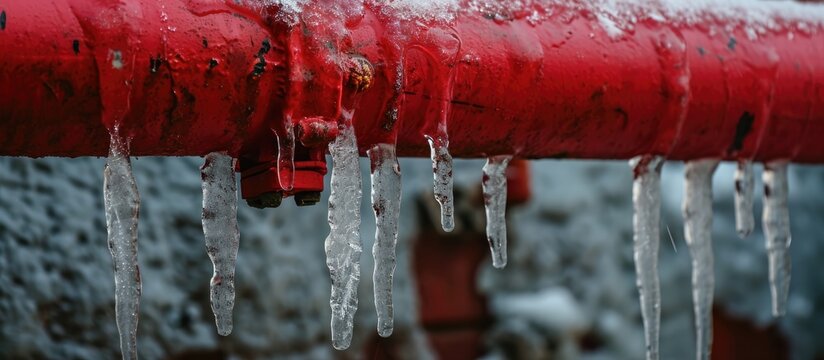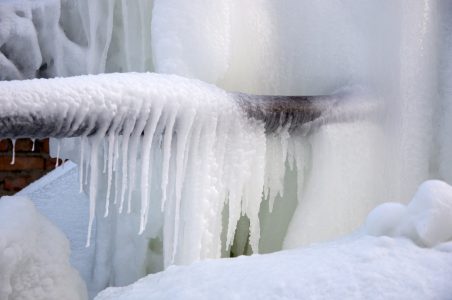In this article underneath you will discover a lot of dependable information involving 6 Ways to Prevent Frozen Pipes.

Cold weather can ruin your plumbing, specifically by freezing pipelines. Right here's just how to avoid it from occurring and what to do if it does.
Intro
As temperatures decline, the risk of frozen pipelines increases, possibly leading to expensive repairs and water damage. Recognizing how to avoid icy pipes is vital for home owners in chilly climates.
Avoidance Tips
Protecting susceptible pipes
Cover pipes in insulation sleeves or make use of heat tape to protect them from freezing temperatures. Focus on pipes in unheated or exterior areas of the home.
Heating strategies
Maintain indoor rooms appropriately heated up, especially areas with plumbing. Open up closet doors to enable warm air to circulate around pipelines under sinks.
Exactly how to determine frozen pipelines
Try to find decreased water circulation from taps, uncommon smells or noises from pipelines, and visible frost on exposed pipelines.
Long-Term Solutions
Architectural modifications
Consider rerouting pipes away from outside wall surfaces or unheated areas. Add additional insulation to attics, cellars, and crawl spaces.
Upgrading insulation
Invest in top quality insulation for pipelines, attic rooms, and walls. Appropriate insulation helps keep constant temperatures and lowers the danger of frozen pipes.
Securing Exterior Pipes
Garden hose pipes and outside faucets
Disconnect and drain pipes yard pipes before winter. Install frost-proof faucets or cover outside faucets with shielded caps.
Comprehending Frozen Pipelines
What triggers pipelines to ice up?
Pipes ice up when exposed to temperature levels below 32 ° F (0 ° C) for extended durations. As water inside the pipes freezes, it expands, putting pressure on the pipeline walls and potentially causing them to break.
Dangers and problems
Frozen pipelines can result in supply of water interruptions, residential property damages, and expensive fixings. Ruptured pipelines can flooding homes and cause comprehensive architectural damages.
Indicators of Frozen Piping
Identifying frozen pipes early can prevent them from bursting.
What to Do If Your Pipes Freeze
Immediate actions to take
If you suspect frozen pipelines, maintain taps available to eliminate stress as the ice melts. Use a hairdryer or towels soaked in hot water to thaw pipelines gradually.
Final thought
Avoiding frozen pipelines needs proactive actions and quick feedbacks. By comprehending the causes, indications, and safety nets, property owners can shield their plumbing throughout winter.
5 Ways to Prevent Frozen Pipes
Drain Outdoor Faucets and Disconnect Hoses
First, close the shut-off valve that controls the flow of water in the pipe to your outdoor faucet. Then, head outside to disconnect and drain your hose and open the outdoor faucet to allow the water to completely drain out of the line. Turn off the faucet when done. Finally, head back to the shut-off valve and drain the remaining water inside the pipe into a bucket or container. Additionally, if you have a home irrigation system, you should consider hiring an expert to clear the system of water each year.
Insulate Pipes
One of the best and most cost-effective methods for preventing frozen water pipes is to wrap your pipes with insulation. This is especially important for areas in your home that aren’t exposed to heat, such as an attic. We suggest using foam sleeves, which can typically be found at your local hardware store.
Keep Heat Running at 65
Your pipes are located inside your walls, and the temperature there is much colder than the rest of the house. To prevent your pipes from freezing, The Insurance Information Institute suggests that you keep your home heated to at least 65 degrees, even when traveling. You may want to invest in smart devices that can keep an eye on the temperature in your home while you’re away.
Leave Water Dripping
Moving water — even a small trickle — can prevent ice from forming inside your pipes. When freezing temps are imminent, start a drip of water from all faucets that serve exposed pipes. Leaving a few faucets running will also help relieve pressure inside the pipes and help prevent a rupture if the water inside freezes.
Open Cupboard Doors
Warm your kitchen and bathroom pipes by opening cupboards and vanities. You should also leave your interior doors ajar to help warm air circulate evenly throughout your home.

As a keen reader about Winter Plumbing Precautions: Preventing Frozen Pipes, I was thinking sharing that blog post was worthwhile. Do you know somebody who is serious about the niche? Be sure share it. Thanks so much for going through it.
Find Out More